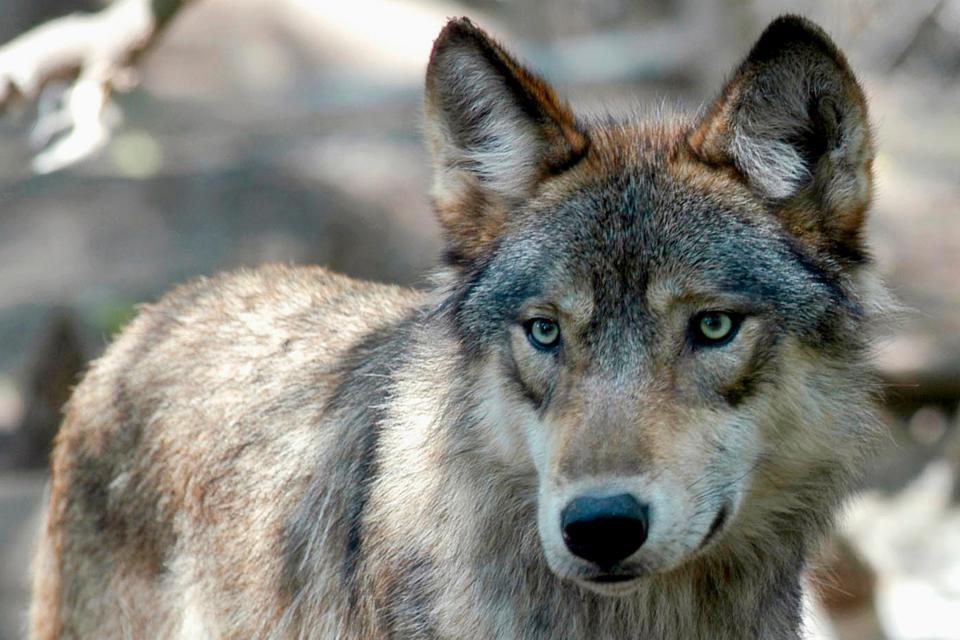Colorado to release gray wolves: Here's when, where and why.
DENVER ‒ Colorado officially launches a controversial experiment next month: State officials will release up to 10 gray wolves as mandated by a 2020 state law that unleashed proverbial howls of protest from opponents.
Wolves have long been a divisive species, particularly in rural areas where many farmers and ranchers consider them an unacceptable risk to both humans and livestock. But for many Americans, they evoke a powerful and meaningful emotional connection with wild places and the natural world.
In keeping with that divide, Colorado voters barely approved the wolves' reintroduction, and the law received most of its support from liberal urban residents living far from where the wolves will be released.
Colorado is planning to release dozens of wolves captured from Oregon over time, with officials hoping that will be enough to ultimately create self-sustaining packs totaling 150-200 animals.

While many other western states today have healthy wolf populations, Colorado is home to only a handful of wild wolves after the species was largely exterminated nationally by the 1940s. Due to their near-elimination, wolves were among the first animals protected by the 1973 Endangered Species Act, which obligated the federal government to try restoring them to the landscape.
"The return of the wolf to Colorado has the potential to be an historic ecological success," Michael Saul, Rockies and Plains field director for Defenders of Wildlife, said in a statement.
What's so controversial about wolves?
Backers of Colorado's reintroduction plan say that wolves are a natural and important part of the ecosystem in the West, and that humans had no right to exterminate them. They argue that safety concerns are wildly overblown, and that ranchers and farmers who lose livestock will be fairly compensated by taxpayers.
But farmers and ranchers consider wolves a dangerous threat to wildlife and stock alike. A single adult wolf can kill and eat as many as 20 elk annually, and ranchers worry they'll have to spend more protecting their cows and sheep, cutting into their already-thin margins.
Federal officials began relocating Canadian wolves into Yellowstone National Park in the mid-1990s, and then to other western states a decade later. Long-running court battles among the states, wildlife defenders, the federal government and other parties have complicated relocation and management efforts.
Today, wolves in the 48 contiguous states are protected from hunting under a 2022 federal court order that overruled a Trump administration decision to let state agencies permit people to hunt wolves in some states. Following that Trump decision, state officials in Montana, Wyoming and Idaho killed 20 wolves that stepped outside Yellowstone National Park.
Congress is currently considering a measure proposed by Colorado Rep. Lauren Boebert, a Republican, to overturn that court decision and give control back to the states so hunters can kill wolves if state officials conclude there are too many living in an area.
Colorado had to get special permission from the federal government to create and manage the new wolf pack. The existing wild wolves in the state likely moved down from Wyoming, according to officials, with evidence they have been breeding.
Where are the Colorado wolves coming from?
After approaching multiple other states, Colorado officials persuaded their counterparts in Oregon to let them trap and relocate up to 10 wolves this year. The wolves will be tranquilized, screened for diseases, tooth decay and other potential problems. The captured wolves chosen for relocation will be 1-5 years old, and both male and female. They will be trucked or flown to Colorado in "sturdy aluminum crates" before being released, wearing GPS trackers.
Several states refused to give wolves to Colorado, in part because many conservative-led states generally oppose seeing wolf populations grow. Wyoming and Utah officials worry Colorado's new wolves will ignore state borders, and have already signaled they want Colorado to pay if the new wolves kill their livestock.
Colorado now plans to release up to 50 wolves captured from Oregon.
“We are deeply grateful for Oregon’s partnership in this endeavor, and we are now one step closer to fulfilling the will of the voters in time,” Colorado Gov. Jared Polis, a Democrat, said in a news release.
Where are the Colorado wolves being released?
The exact locations will be kept secret, but the wolves will generally be released on state or private land in a rural area of west-central Colorado. Officials who selected the release area considered the nearby human population and its political support for wolves, and access to prey animals like elk and deer. It's also far from borders with Utah, Wyoming and New Mexico, and tribal lands in southwest Colorado.
Specifically, the area generally includes the cities of Aspen, Gunnison and Glenwood Springs, but is otherwise largely rural with relatively few cattle or sheep ranches. The wolves are not being released onto federal land, although they will likely end up on it: 36% of Colorado is federal property.
A study from the 1995 wolf reintroductions in Yellowstone National Park found the animals moved as far as 140 miles from their release point, although most remained within 50 miles of the dropoff point. Federal officials say those newly introduced wolves killed 256 sheep and 41 cows on nearby ranches in the first eight years after their reintroduction to the park.
In 2021, wolves living in northern Colorado killed a 500-pound cow ‒ the first documented wolf kill of livestock in Colorado in at least 70 years.
This article originally appeared on USA TODAY: Colorado to release gray wolves: Here's when, where and why.

